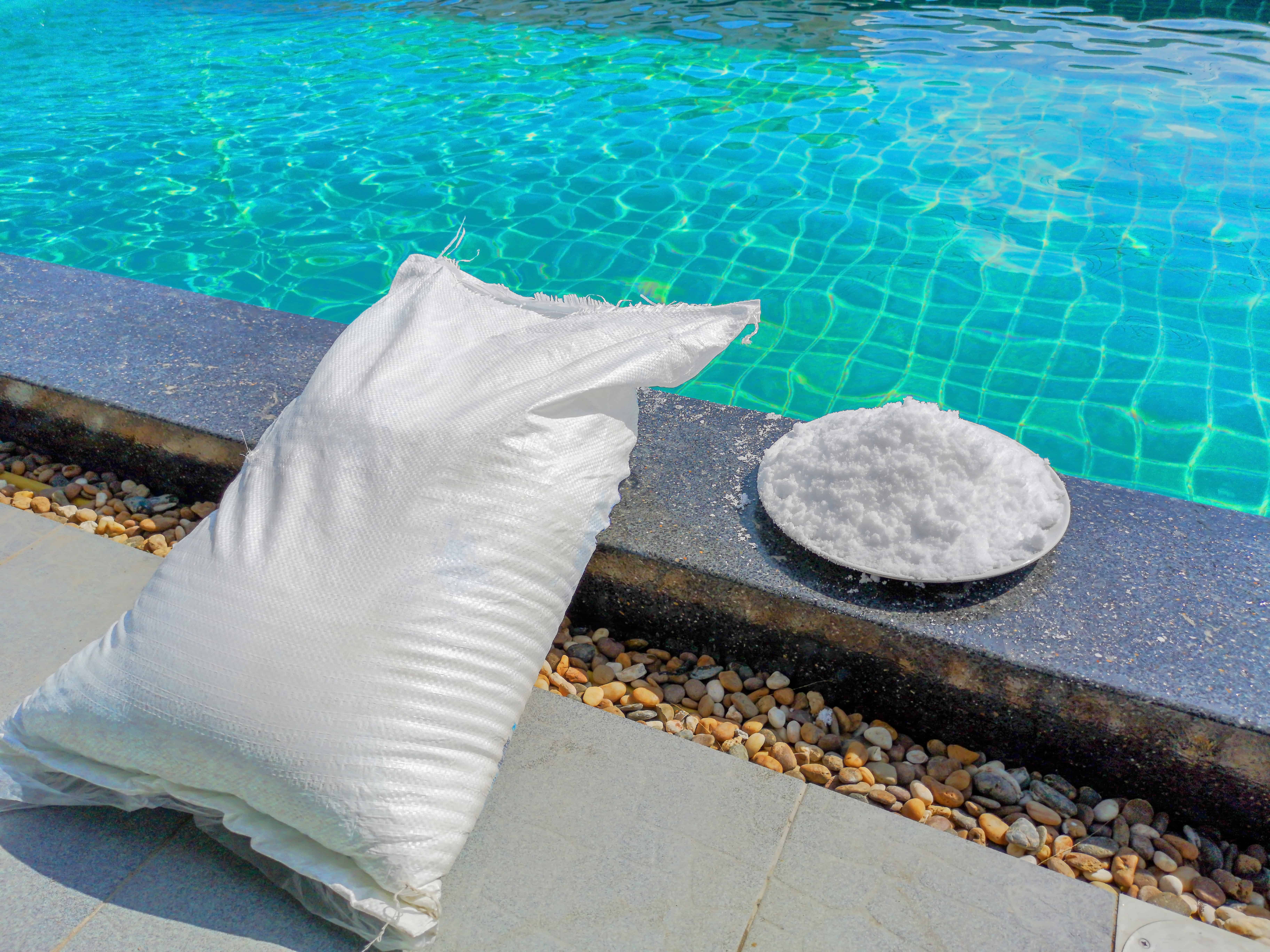If you’re a new salt water pool owner, you might wonder how and where you actually add salt to the water?
And how often do you add salt for that matter?
Actually, knowing what type of salt is rather important too. There are plenty of types of salt so which one do salt water pool owners need?
Let’s look at the answer to each of those questions regarding salt water pool ownership and how salt gets added.
How do you add salt to a salt water pool?
You can safely add your salt directly into the deep end of the pool and let it do its thing. Don’t put salt into the side skimmer as you don’t want highly concentrated salt going through the pump or salt cell and there is really no need to so either.
If you’re using salt pellets (more on that below) you definitely don’t want to pour salt into the skimmer because it’ll quickly clog up.
Your best bet is to confirm the amount of salt you need and simply dump it in the deepest end of the pool with the pump running.
It’ll dissolve and make its way through the pump and chlorinator with some time.
It’s a good idea to use your pool brush to move the salt around a bit so that it doesn’t sit in a big lump on the bottom of the pool as this will help it dissolve quicker.

How often do you add salt to a salt water pool?
When you build a new salt water pool, you’ll probably need about 200 lbs of high grade salt (NaCl) for every 10,000 gallons of water. This is a good rule of thumb. You will then typically add salt to your pool during pool opening in the spring and perhaps again during the season.
Once you have your pool up and running, you’re looking to keep the salt level between 2700 ppm and 3400 ppm where ppm means parts per million. A good number to aim for is 3200 ppm since it’s close to the high end and will ensure you have enough salt to last for most of the swimming season.
Over time you will lose salt due to splashing, washing your filter (if you have a sand or D.E. filter), leaks and other reasons such as draining water when it gets too high after rain. So you should expect to probably add salt to your pool twice per season on average if not more frequently:
Pool opening: When you open the pool in the spring, assuming you drain part of the pool for winter, you will have to add salt. Closing the pool involves draining water for winter and thus salt is lost. You then have to add salt in the spring to bring the salt level back up again. Expect to add around small 2 bags in my experience.
Mid season: Typically, you might need to add 1 bag of salt midway through the summer to bring the salt level up again especially if you have lost water for the some or more of the reasons above. While water typically evaporates during the summer, significant rain fall can raise the water level too high and if you need to drain water, you’ll lose salt. Adding 1 small bag is pretty standard in my experience.
NOTE: If you use a sand filter or D.E. filter that gets backwashed, expect to add more salt each season as each backwash may reduce water in your pool by several hundred gallons each time, which means more salt is lost.
What sort of salt is added to a salt water pool?
Pool salt is specifically formulated for use in a salt water pool. While more expensive than other suitable forms of salt, you generally can’t go wrong since it is pool specific. You can also use white salt pellets made for water softeners. Look for the purest salt you can find, typically 99% and up (it’s listed on the bag).
Check with your pool chlorinator manufacturer to see what their recommendation is.
I’ve only ever used standard water softener salt pellets in my salt water pool and have never had trouble. The pellets dissolve slower than pool salt which is crystalized but they will completely dissolve in the deep end of the pool in about one day with the pump running.
Stick with real pool salt or white pellet water softener salt. Stay away from rock salt, road salt or any salt that is multi-colored. These are better suited to be used in winter on your driveway and are not suitable for a salt chlorinator.
Don’t use salt with yellow prussiate of soda, salt with anti-caking additives or iodized salt which is also known as table salt that you’d use on food.
Summary
The best place to add salt to a pool is in the deepest end with the pump running. The salt will dissolve with some time depending on whether you use crystalized pool salt which is granular or white water softener pellets which are larger and will take more time. Either works fine in a salt water pool but pool specific salt is usually more expensive.
To learn more about what type of salt to add to your pool, check out my article called Avoid These Mistakes In Your Salt Water Pool.

